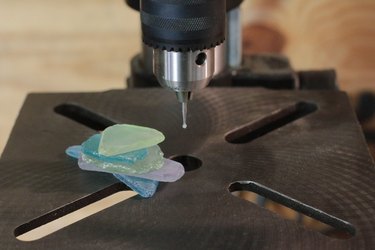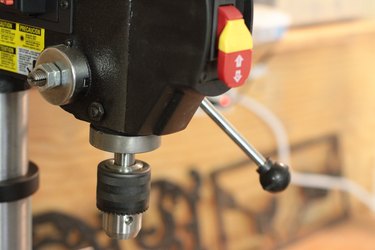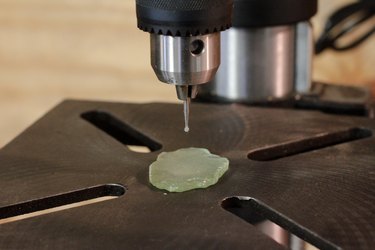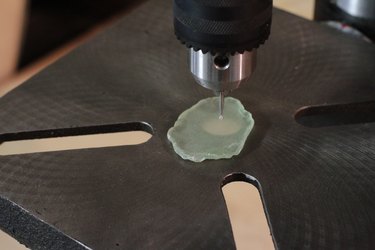Things You'll Need
Drill
Diamond-coated drill bits
Plastic container
Sponge, small piece of wood, modeling clay or florists' foam
Permanent marker
Safety goggles

Finding a beautiful pebble or a perfect piece of sea glass, tumbled smooth by years of tossing in the sand and surf, is like finding a tiny treasure. A collection of sea glass looks pretty in a jar on the windowsill. But if you want to turn it into jewelry or home decor, you'll likely need to drill small holes in your treasures. Drilling a hole in a piece of glass or a pebble sounds difficult and dangerous, but all it takes is the right tools, a little know-how and patience.
Step 1

Use the right tools to ensure successful drilling. You can use a standard power drill, a small Dremel drill or a drill press. Select a small-diameter, ball-tipped, diamond-coated drill bit between .084 and 1 millimeter.
Video of the Day
Step 2

Use water to lubricate the drill bit, keep the glass or pebble cool and prevent dust. You can easily do this by placing the glass or pebble in a small plastic container. Add enough waterto cover the glass or pebble, but no more. Stabilize the glass or pebble by putting it on a small piece of sponge, wood, modeling clay or florist foam inside the plastic container.
Step 3

Use the right drill speed. The larger the drill bit, the slower your drill speed should be. When drilling glass, use a speed of 2500 rpm for a drill bit less than 1/8-inch, or 750 rpm for a 1/8- to 1-inch bit. When drilling a pebble, use a speed of 1000 rpm for a bit less than 1/8-inch and 500 rpm for a bit between 1/8- and 1-inch. Consult the owner's manual of your drill to determine how to change the speed.
Step 4

Position the drill correctly. When drilling a pilot hole, hold the drill at a slight angle, just enough to help it "bite" into the surface of the glass or pebble. When you are drilling the actual hole, hold the drill so the bit is straight up and down.
Step 5

Let the drill do the work for you. Don't press down. Drill a little at a time. Lift the bit out of the hole every few seconds to allow the water to wash the dust out of the hole before resuming drilling. If the glass or pebble is particularly thick, drill half-way in. Turn it over and complete the hole from the other side.
Tip
Mark the glass with a permanent marker where you want the hole to be. Practice a few times on scrap or less-than-perfect glass or pebbles.
Warning
Always wear safety goggles while drilling. Use caution when operating power tools near water. Only use enough to cover the glass or pebble. Do not use spade or arrow shaped bits because these can cause glass to crack.
Video of the Day